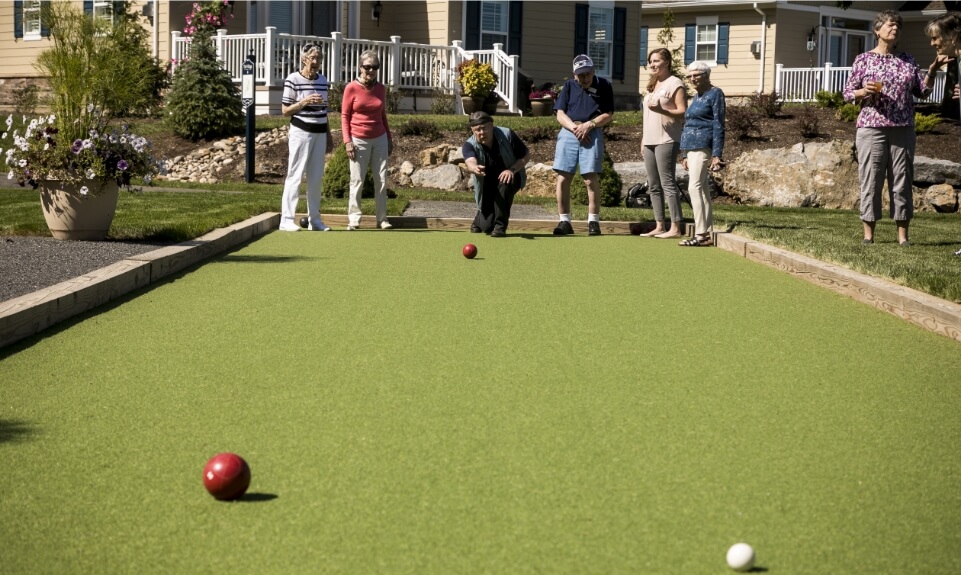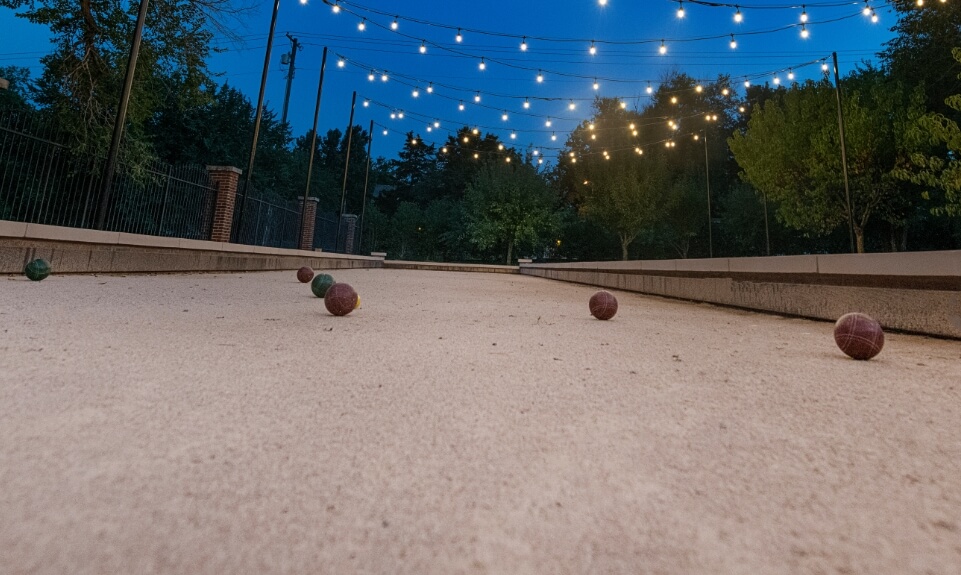Select Your Playing Surface
Historians claim bocce ball originated in Egypt as early as 5,000 B.C...so we can assume that it has been played on a wide variety of surfaces over the years. Today the game is enjoyed everywhere form sandy beaches to the manicured lawns of people's backyards. However, the primary surfacing options used in the building of bocce courts tends to be crushed oyster shell, synthetic turf, clay, sand or fine gravel.
Crushed Oyster Shell
The most traditional bocce court surface features a 2" to 3"layer of crushed oyster shell over a decomposed granite base. These materials combine to create a compact, porous rolling surface with acceptable drainage.
Unfortunately, crushed oyster shell bocce courts require extensive, ongoing maintenance and are inherently not very clean. Given this, synthetic turf bocce courts and other proprietary mixes have grown in popularity over the years.
Learn More

Synthetic Turf
The use of synthetic turf in the construction of bocce courts has exploded over the last decade. The unitary surface is very clean and requires virtually no ongoing maintenance.
Plus, advances related to the design of the turf, infill and sub bases have allowed courts to be engineered for great playability while still achieving years of low-maintenance use.
Learn MoreClay
Clay is a hard, rugged surface that is less prone to indentions and erosion when compared to traditional crushed oyster shell.
However, clay surfaces tend to drain very poorly and are prone to solidifying - requiring constant patching and scarifying.
Learn More

Sand or Pea Gravel
Sand or pea gravel are common choices for a bocce court surface due to their low cost and widespread availability. When properly maintained, these surfaces offer a cost-effective alternative to traditional crushed oyster shell.
However, as a loose-fill surface, the sand or gravel can get tracked throughout the surrounding area and it's still a surface that requires a great deal of maintenance - including frequent raking.
Learn MoreComparison Chart
| Surface Features | ||||
|---|---|---|---|---|
|
Dust/Mess Free
|
 no no |
 yes yes |
 no no |
 no no |
|
Low Maintenance
|
 no no |
 yes yes |
 no no |
 no no |
|
Environmentally Friendly
|
 yes yes |
 yes yes |
 yes yes |
 yes yes |
|
Great Drainage
|
 yes yes |
 yes yes |
 no no |
 no no |
|
Typical Cost
(Surface Material Only) |
$$$
|
$$$
|
$
|
$$
|





